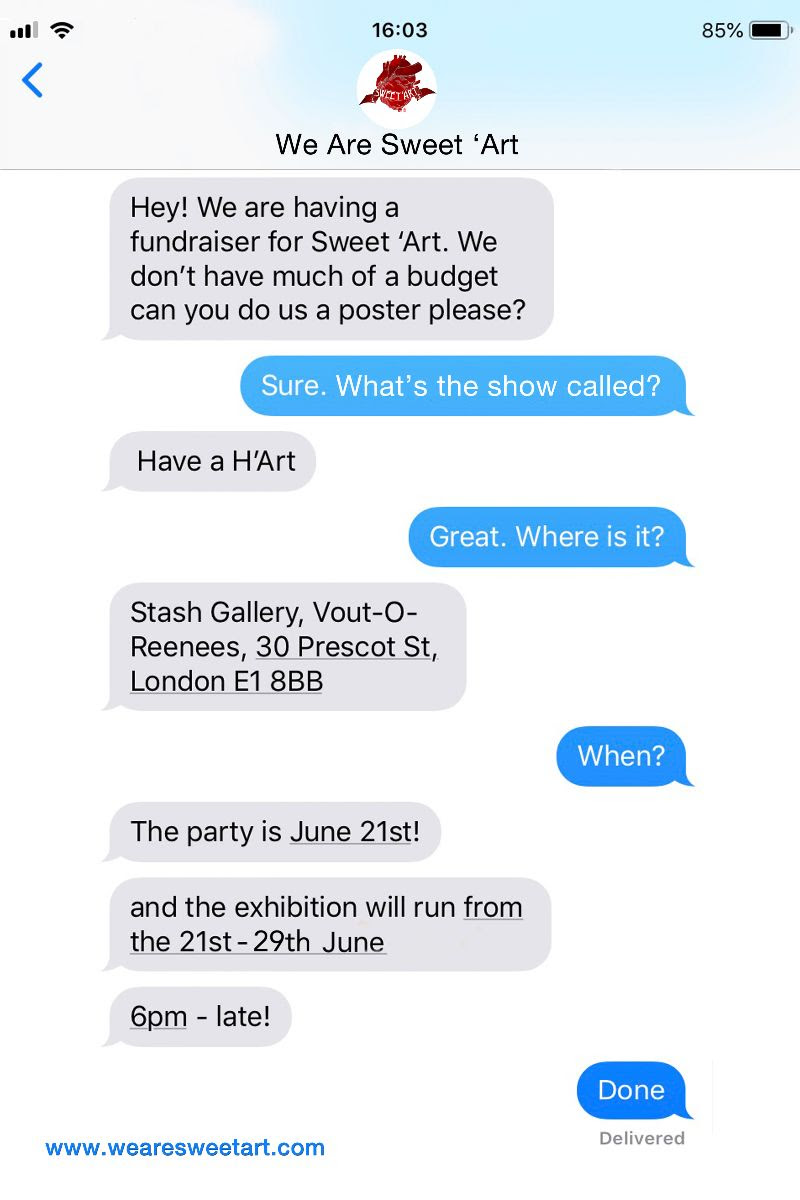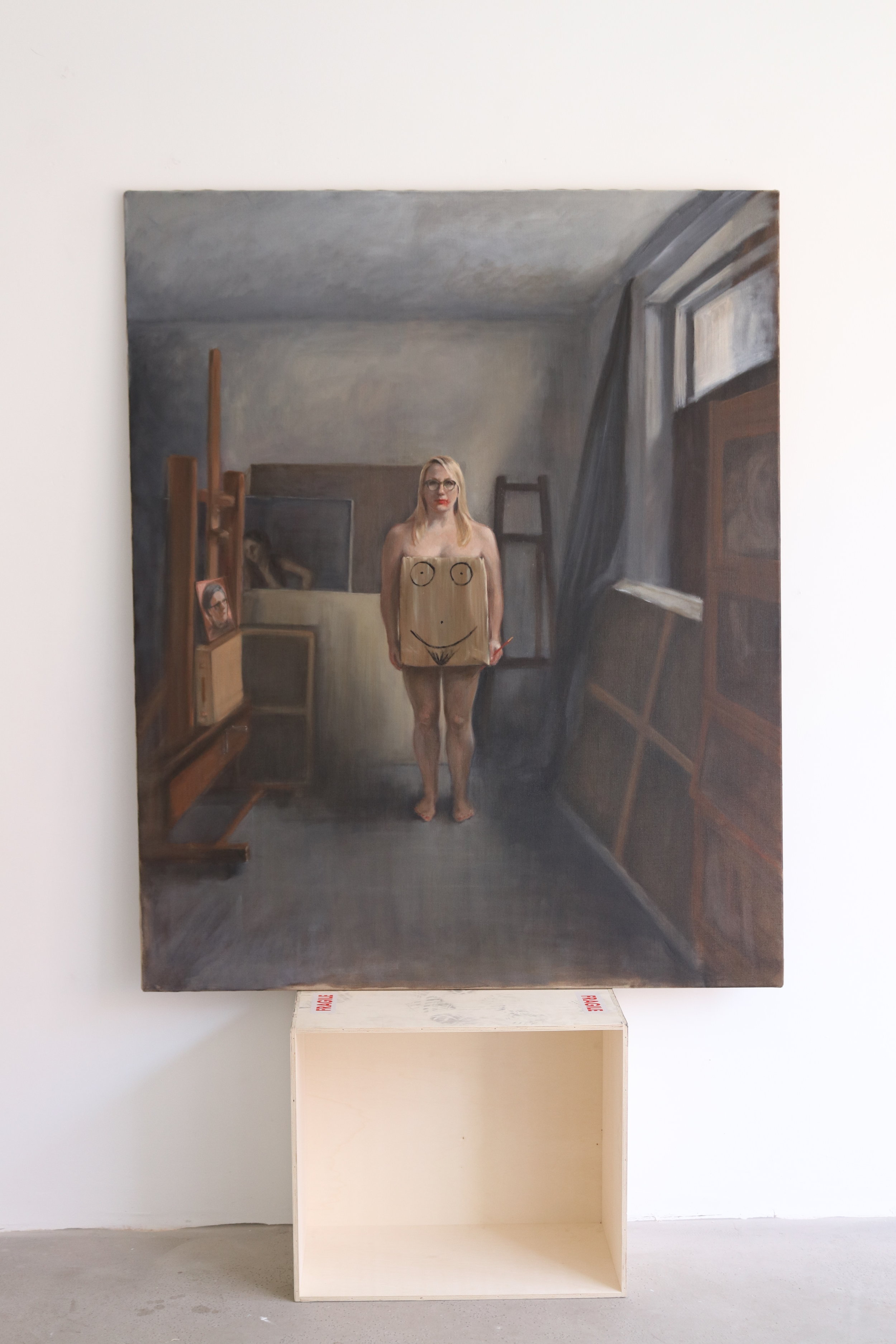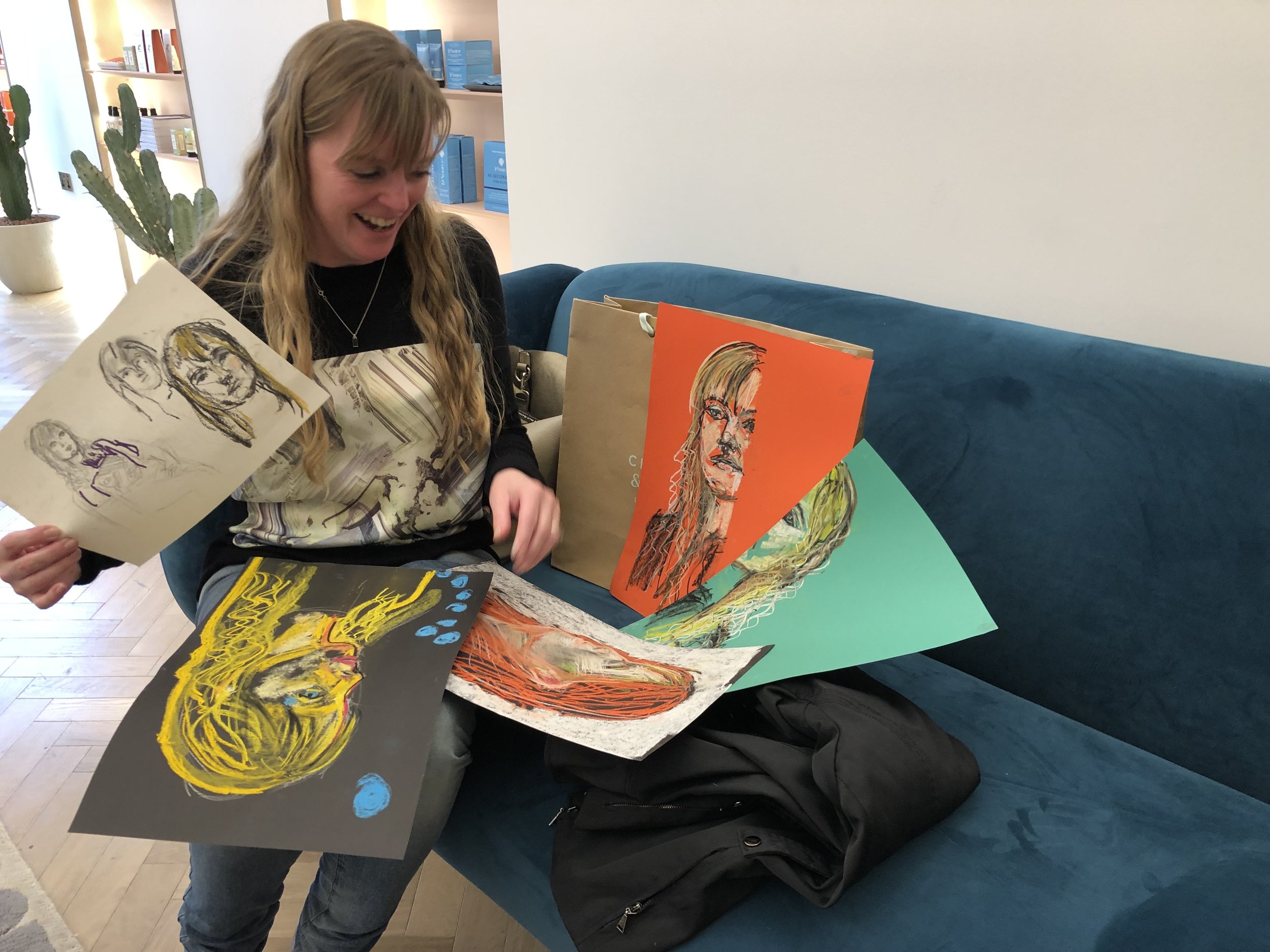It is #MentalHealthAwarenessWeek, this year's theme being #BodyImage. An apt week to be showing my new painting - 'Smile - Post-Partum Self-Portrait', part of the MA Fine Art Show 'FRAGILE' at the UNIFY Gallery in Farnham.
The painting shows a woman standing naked, inside an old cardboard box in an artist's studio, surrounded by canvases and easels. The box displays the childlike painting of breasts, stomach and pubic hair. The light falls upon her from above, striking her head, left shoulder, and a paintbrush in her left hand and bouncing off the copper portrait of a woman on the easel to her right. She stands head on to the viewer, a serious, solemn expression, red lipstick smudged across her face.
The title of the painting belies the true feelings of the figure in the painting. There is no trace of a smile here. It is reminiscent of the immediate aftermath of having a child - the 'happy event' when photographs are taken on the operating table, as the mother lies with screaming baby on top of her chest, the anaesthetised tugging of her insides as they sew her back up ('Smile!'). Her body has been a vessel for 9 months, prodded and poked, no longer her own because of the foetus growing inside her. She has become an vast object, with no control over her own being. And after the removal of the baby through an opening in her stomach, she enters a new phase of womanhood - motherhood.
The psychological and physical trauma of having a child by c-section or otherwise is often overlooked, as everyone's attention turns to the new human being freshly delivered. Job done. Smiles all round.
She cannot bear to see her body in the mirror anymore. She does not recognise herself in the reflection - an old cardboard box, used to carry objects feels like the only suitable way of disguising the disgusting nature of her post-natal body.
Her past is alluded to in old paintings propped up against the wall. The erotic portrait of a distant Berlin model, now the underpainting for this new artwork. If you gaze at the space between her head and the window, you might glimpse the ghostly image of the model's arm, as she leans on her knee, nipple exposed and now hidden, framed by the easel in the background. The erotic era is over.
She is becoming a/her mother as she works on the copper plate portrait to her right. She is coming to terms with the next phase of womanhood, knowing that eventually she will become her mother. The ageing process is inevitable.
The light in the room points to the brush in her hand, the new painting on the easel. Art is the light, art is the rhizomatic thread in this self-portrait. Art is what makes it all worthwhile.





